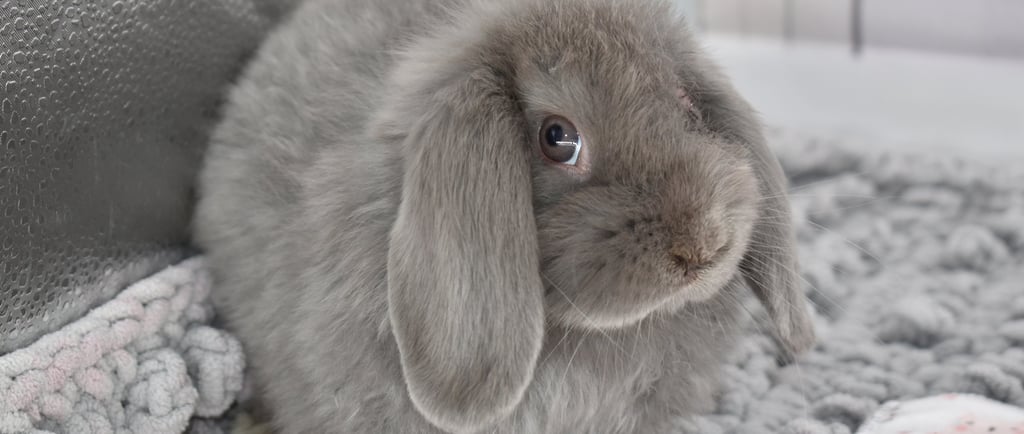Bunny Development - Week seven
This is the final full week the babies are with us! What does this week look like as the babies are just about to be placed with their new families?
Amy J.
12/11/20243 min read


As we continue to explore the growth and development of young rabbits prior to their placement in their new homes, we reach the final full week they are usually with us. We begin to say our goodbyes as we prepare to place them with their amazing new families.
At seven weeks, the babies have grown remarkably from the day of their birth. For a visual image, it would be like a 6lb. human baby reaching his/her stature as a 10 year old in only 7-8 weeks. Pretty crazy, right? Most babies are approaching the size of an adult true dwarf Holland Lop by the time they are placed. They may weigh a pound or so less than their parents, but the body frame is getting closer and closer to that of an adult dwarf rabbit.
The babies are much more alert and active throughout the day. They eat, play, nap, and play some more. They may still try to sneak a nursing snack in from time to time, but most mothers are happy to refuse their entreaties at this point. Mothers of larger litters are frazzled and long for a few days at a spa retreat to rest and recuperate from the demands of motherhood.
We keep the babies occupied in separate exercise pens for larger portions of each day, to give them time to be more independent of their mothers. We use a gradual weaning process in order to observe them carefully and make certain none of the babies suddenly begin to lose weight or display any unusual behavioral issues from being away from their mothers for too long. It may take them a day or two to adapt to only hanging out with their littermates, but they soon immerse themselves in play and cuddling with their siblings during naptime. They frequently engage in bouts of tug of war with a piece of hay two babies want to eat at the same time. It's rather comical, but a third littermate will often swoop in and steal the treat from both of them. They look absolutely aghast by the actions of the interloper and go back to searching for a desirable piece of hay only moments later. They go back to their mothers in the evening for some more snuggles and reassurance.
They still love to sleep together in "cuddle puddles" and lay all over each other. We often have to pluck poo balls from fur after a littermate has left multiple reminders of who was "top Bun" during the most recent nap. The babies enjoy chewing on willow balls and other toys, and will spend time booping balls around with their noses. Tunnels and boxes remain among their favorite toys. They love to sit on their hind legs and observe the goings on around them, spying on other rabbits and humans alike to see what types of things the other bunnies/people are doing and playing with.
The babies eat like hungry athletes and are still given full bowls of food any time the pellets run low. Water is changed 2-3 times each day. They go through a lot more hay at this stage. We clean the exercise pens once or twice daily , depending upon how they are responding to their litterboxes.
When picking a baby up at this stage, we are often surprised by the sudden mass they have seemed to gain almost overnight. They were little bitty things one day, and the next, they often have little chubby bellies and need both hands to carefully lift them, rather than the quick one-handed scoop up we had been able to use.
Some babies make a game of mounting (humping) their littermates and mothers. Because they are bigger and stronger, we have to make certain they don't hurt one another. The babies are not sexually developed enough to actually breed. This just something the bunnies (usually, but not always, the baby bucks) do by instinct. If they get too rough, we will wean the instigators fully and house them separately until they go to their new homes.
This is the most bittersweet week for us as bunny breeders, because we know it's almost time to place them in the hands of their new families. We have watched over them so carefully for seven weeks, but now someone else has a claim upon them. We tell them about their new families each day, to make them more real to the Buns and to ourselves. There comes a mental shift when they are no longer "our" babies, but fully belong to their new families in our hearts and, once that shift happens, we become more and more excited to meet the families and introduce them to their long awaited Buns. When placement day arrives, we are ready to rejoice and celebrate with them and their families!
